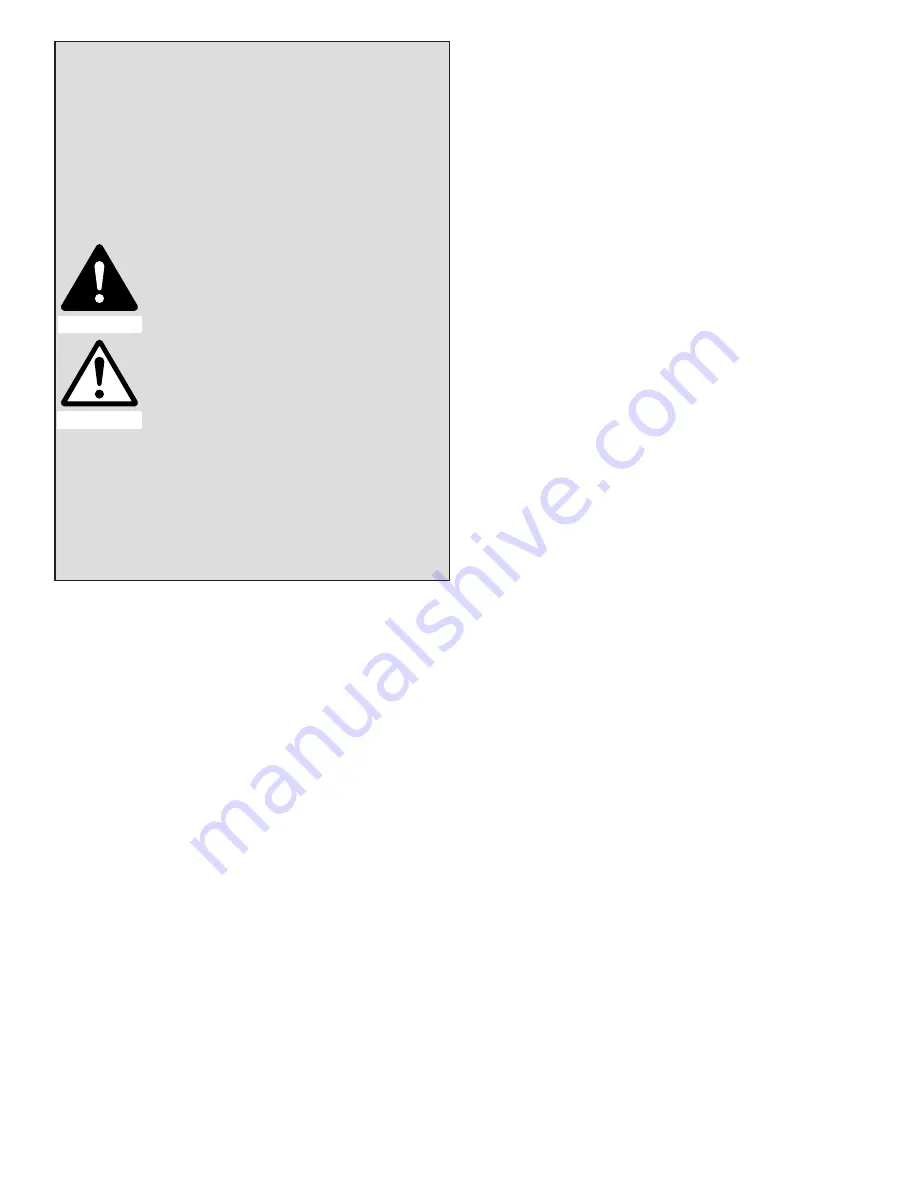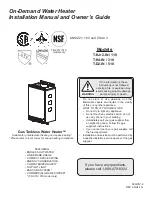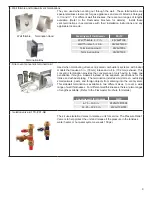
5
DANGER
WARNING
•
Water temperatures over 52 °C (125 °F)
can cause severe burns instantly or death
from scalding . The water temperature
is set at 50 °C (122 °F) from the factory
to minimize any scalding risk . Before
bathing or showering always check the
water temperature .
•
Do not store or use gasoline or other
flammables, vapors, or liquids in the
vicinity of this appliance .
•
Do not reverse the water and/or gas
connections as this will damage the gas
valves and can cause severe injury or
death . Follow the diagram on pg . 16
when installing your water heater .
•
Do not use this appliance if any part has
been in contact with or been immersed
in water . Immediately call a licensed
plumber, a licensed gas fitter, or a
professional service technician to inspect
and/or service the unit if necessary .
•
Do not disconnect the electrical supply if
the ambient temperature will drop below
freezing . The Freeze
Protection
System
only works if the unit has electrical power .
The heat exchanger will not be covered
under warranty if it is damaged due to
freezing . Refer to the section on the
Freeze Protection System on pg . 26 for
more information .
INSTALLATION
General
1 . Follow all local codes, or in the absence of local codes,
follow the most recent edition of
CSA B149.1 Natural
Gas and propane Installation Code
.
2 . All gas water heaters require careful and correct
installation to ensure safe and efficient operation . This
manual must be followed exactly . Read the “Safety
Guidelines” section .
3 . The manifold gas pressure is preset at the factory . It is
computer controlled and should not need adjustment .
4 . Maintain proper space for servicing . Install the unit so
that it can be connected or removed easily . Refer to the
"Clearances" section on pg . 7 for proper clearances .
5 . The water heater must be installed in a location where
the proper amount of combustible air will be available to
it at all times without obstructions .
6 . The electrical connection requires a means of
disconnection, to terminate power to the water heater for
servicing and safety purposes .
7 . Do not install the unit where the exhaust vent is pointing
into any opening in a building or where the noise may
disturb your neighbors . Make sure the vent termination
meets the required distance by local code from any
doorway or opening to prevent exhaust from entering a
building . (Refer to pg . 13, CSA B149 .1 .)
8 . Particles from flour, aerosols, clothes dryers and other
airborne contaminants may clog the air vent, build up
and reduce the functions of the rotating fan, cause
improper burning of the gas, or cause damage to the
water heater . Regularly ensure that the area around
the unit is dust or debris-free . Regular maintenance is
recommended for these types of environments . Sealed
combustion is recommended too .
9 . For the T-KJr2-IN / 110, T-K4-IN / 310, & T-D2-IN / 510
models:
•
These units may be converted to a direct-vent
(sealed combustion) appliance by installing a direct-
vent conversion kit (Part No . TK-TV10) which will
bring in all required combustible air from outside the
building . When installing the direct-vent conversion
kit, please follow all instructions included with the kit .
•
If the water heater is used as a direct-vent appliance,
the unit requires a 76mm (3 in .) combustible air
supply pipe . The intake pipe must be sealed airtight .
Air supply pipe can be made of PVC, CPVC, ABS,
Polypropylene, corrugated stainless steel, Category
III / IV stainless steel or aluminum flex tube .
•
Terminating the venting through a sidewall is
recommended for the direct-vent system .
•
Running the exhaust vent and the intake pipe
parallel is recommended .
•
Terminating the exhaust and intake on the same
wall/surface is recommended . Terminating in the
same pressure zone allows for pressure balancing,
which prevents nuisance shutdowns .






































